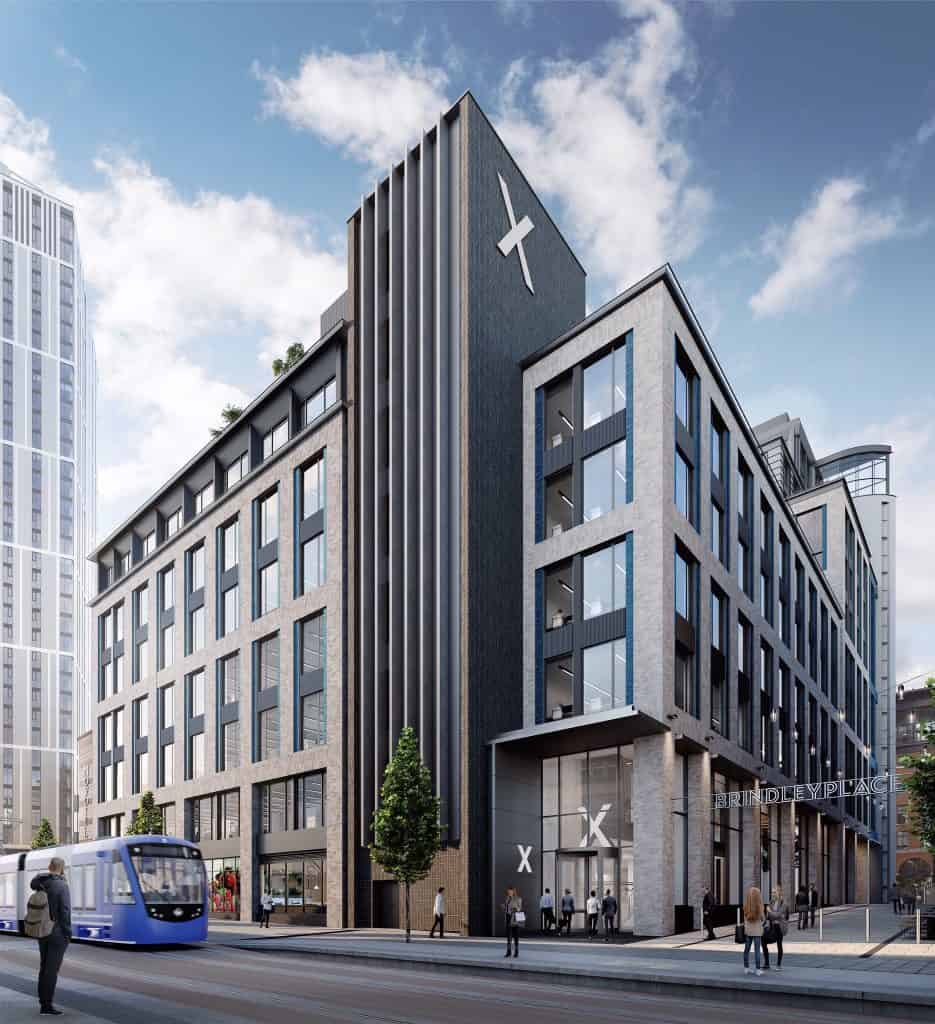Sustainable buildings can deliver a range of benefits, from increasing the value of property to reducing environmental impact and lowering operational and maintenance costs.
The difficulty faced by occupiers, landlords and developers is in navigating a complex market of sustainability related benchmarks and accreditations, including: BREEAM, Fitwel, WELL and NABERS.
As part of a forthcoming series of articles, we’re unpacking the basics of each of these sustainability accreditations. Starting with BREEAM, we’ll take a look at what they cover, why they’re important and how we support our customers in achieving accreditation for their own fit out and refurbishment projects.
What is BREEAM certification?
The internationally recognised Building Research Establishment Environmental Assessment Method – popularly known as BREEAM – is designed to drive sustainability and wellbeing across the built environment through a robust framework for the verification and certification of built assets.
Launched in 1990 by the UK’s Building Research Establishment, it sets standards that help improve a building’s performance at every stage, from design and construction, to use and refurbishment.
Its aim is to not only recognise and reward buildings with genuinely green credentials, but to improve sustainability in those buildings and in the wider built environment too.
Why is BREEAM popular?
BREEAM is by far the most common building certification in the UK and is also being applied in over 85 countries. It has been used to certify over 590,000 assessments to date, of buildings across the building life cycle.
Its popularity is partly explained by cost-effectiveness. While securing BREEAM-certification inevitably involves upfront costs (i.e. certification fees and the appointment of an assessor), a high rating of BREEAM certified building is likely to be significantly cheaper to operate than one without certification.
BREEAM’s approach to measuring and quantifying environmental impacts makes it an attractive measurement tool which can support a predictive reduction in CO2 emissions during the planning application process and unlock any linked funding requirements.
Some customers value having an independent, internationally recognised benchmark to demonstrate a building’s sustainability credentials, while BREEAM has also been adapted to British construction law and best practices, which further boosts its appeal.
BREEAM is flexible to align with existing industry practices and other standards where possible.
What are the benefits of a BREEAM rating?
- Can make a property more attractive to future occupiers (i.e. when considering factors such as employee health and wellbeing, waste reduction, sustainable procurement, biodiversity enhancements, energy usage, water reduction etc)
- Likely to have better thermal and acoustic comfort performances, which can translate into increased employee productivity
- Demonstrates environmental performance through the efficiency of heating systems, lower water consumption and improved energy efficiency, which can help reduce maintenance and replacement costs
How are BREEAM projects assessed?
BREEAM accreditation refers to the process of having a building assessed and certified according to BREEAM standards.
Accreditation includes a thorough evaluation of the building’s environmental performance across 10 key categories:
- Energy (i.e. LED lighting, energy monitoring systems
- Health and Wellbeing (i.e. thermal comfort, lighting comfort, safety and security)
- Innovation – (i.e. opportunities that demonstrate performance beyond compliance)
- Land Use and Ecology – (i.e. measures that protect and enhance existing biodiversity and communities in the neighbourhood)
- Management – (i.e. responsible construction practices, commissioning, and after care)
- Materials – (i.e. sustainable procurement)
- Pollution – (i.e. identification and mitigation of sources of pollution including noise and night light pollution)
- Transport – (i.e. accessibility to transport nodes, amenities and cycling facilities)
- Waste – (i.e. segregation and sorting of operational waste, reduction of demolition and construction waste)
- Water – (i.e. reduction of water consumption during construction and operations)
BREEAM’s third-party certification involves the validation of the assessment by impartial assessors who are formally trained by the BRE Academy. BRE Global is accredited by the United Kingdom Accreditation Service as a certification body and operator of BREEAM, validating its competence, impartiality, and the robustness of its processes.
Two assessments which are part of two certification stages are carried out: a design stage assessment which results in an interim BREEAM certificate, and a post-construction assessment which results in a final BREEAM certificate.
How are BREEAM projects scored?
Each BREEAM rating level broadly represents performance equivalent to:
- Outstanding: >85%
- Excellent: >70%
- Very Good: >55%
- Good: >45%
- Pass: >30%

Take a look at our BREEAM projects
Willmott Dixon Interiors is at the forefront of delivering many highly sustainable buildings nationwide and we have a strong record in achieving BREEAM certified projects for our customers.
We have supported three recent projects in achieving design stage interim BREEAM certification:
Find out more about our Now or Never Sustainability ambitions here.

